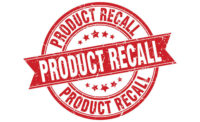As a food industry lawyer, I like to closely track recalls of U.S. Department of Agriculture-regulated products. Each year, I watch with interest (and, sometimes, bewilderment) as a continuous stream of recalls float by. The reasons for recalls can vary wildly, involving issues ranging from the unavoidable presence of pathogens to the very avoidable presence of hydraulic fluid.
Between Jan. 1, 2000, and now, there have been a total of 1,782 recalls of USDA-regulated products. Of those, 1,306 have been Class I, 340 have been Class II, and 134 have been Class III. Generally speaking, a Class I recall involves a situation where there is a reasonable probability that the use of a product will cause “serious adverse health consequences.” A Class II recall involves a situation in which “the probability of serious adverse health consequences is remote.” A Class III recall involves a situation in which adverse health consequences are “not likely.” Thus, over the course of the last 20 years, USDA has erred on the side of caution and has characterized most recalls as Class I.
Of the 1,782 recalls spanning the last 20 years, 677 have involved products suspected or known to be contaminated with pathogens, 648 involved products containing undeclared Big 8 Allergens, and 206 recalls involved the presence of foreign materials. The remaining 251 involved a variety of issues such as quality issues, off-color or flavor, process deviations, general mislabeling, insanitary production, spoilage organisms, bloated packages and human blood from when a plant employee cut his finger.
In the category of pathogens, Listeria monocytogenes took the lead causing 309 recalls. E. coli O157:H7 took second place, assigned responsibility for 244 recalls. Salmonella came in third, having led to the announcement of a total of 77 recalls. Collectively, non-O157:H7 Shiga toxin-producing E. coli (STECs) were responsible for 25 recalls. In the category of allergens, the undeclared presence of milk resulted in the largest number of recalls, at 181. The undeclared presence of soy caused the second-highest number of recalls, at 162. Coming in third was wheat/gluten, causing 126 recalls. The presence of undeclared peanuts was responsible for only 28 recalls of USDA-regulated products. In the category of foreign materials, the leading recall-causing culprit was plastic, which was responsible for 116 recalls. Plastic was followed by metal and glass, causing 54 and 14 recalls, respectively. Rubber, bones in boneless products and small rocks were responsible for numerous recalls as well. Reflecting on 20 years of USDA recall data is a useful and interesting exercise. It enables us to identify where trends have existed and to see where they are going. It also shows us where our highest food safety risks may lie. Moving forward, keep up the great food safety fight. Perhaps in 20 years we’ll look back and be very proud of what we see. NP






